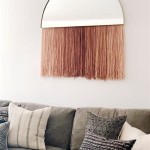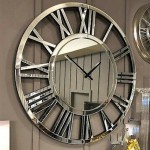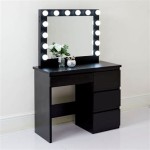How to Frame an Arched Mirror
Arched mirrors offer a touch of elegance and architectural interest to any space. Framing them, however, presents unique challenges due to their curved tops. This article outlines various methods for framing an arched mirror, providing detailed instructions and considerations for each approach.
Understanding the Mirror's Arch
Before beginning any framing project, it's crucial to determine the type of arch. Common arch shapes include semi-circular, segmental, and Gothic. Accurate identification of the arch type is essential for selecting appropriate framing materials and techniques. Measuring the mirror's width, height to the peak of the arch, and the height to the start of the curve provides necessary dimensions for creating accurate frame components.
Choosing the Right Framing Materials
The choice of framing material depends on the desired aesthetic, budget, and skill level. Wood offers a classic and versatile option, allowing for intricate detailing and various finishes. MDF (medium-density fiberboard) provides a cost-effective alternative, particularly for painted finishes. Metal, such as aluminum or steel, can create a more contemporary look. When working with wood, select a species that is easy to bend and shape, such as poplar or pine. For complex arch shapes, flexible molding made from polyurethane or PVC might be the most suitable option.
Method 1: Flexible Molding
Flexible molding simplifies the framing process for arched mirrors. This material readily conforms to the curve of the arch, eliminating the need for complex joinery. Begin by accurately measuring the mirror's perimeter, including the curved section. Cut the flexible molding to the required length, ensuring a precise fit. Apply a strong adhesive designed for both the molding material and the mirror's backing. Carefully adhere the molding to the mirror, following the curve of the arch. Secure the molding in place with clamps or masking tape while the adhesive dries completely. Caulk any gaps between the molding and the mirror for a seamless finish.
Method 2: Kerf Bending
Kerf bending involves making a series of kerfs (cuts) on the back of a piece of wood, enabling it to bend along a curve. This technique requires careful planning and precise execution. Start by determining the radius of the arch. The kerf spacing and depth depend on the tightness of the curve and the thickness of the wood. Using a table saw or circular saw, make evenly spaced kerfs on the back of the wood, stopping just short of the front face. Apply wood glue to the kerfs and carefully bend the wood to conform to the arch's curve. Clamp the wood in place until the glue dries. This method provides a strong and elegant frame, especially suitable for wood with a decorative finish.
Method 3: Segmental Construction
Building a frame from multiple small segments offers a solution for intricate arch shapes. This method involves cutting short pieces of wood and joining them together to form the curve. Precise angle calculations and meticulous joinery are critical for achieving a smooth and seamless curve. Begin by dividing the arch into several equal segments. Calculate the angle of each segment and cut the wood pieces accordingly. Use wood glue and clamps to assemble the segments, ensuring tight joints. Once the glue dries, sand the joints smooth for a seamless finish. This method allows for greater flexibility in design and material choice but requires more advanced woodworking skills.
Finishing the Frame
After the frame is assembled, the finishing process enhances its appearance and protects the material. Sanding the frame smooth prepares it for painting or staining. Apply a primer to seal the wood and provide a uniform base for subsequent coats. Apply paint or stain according to the manufacturer's instructions. Consider adding a protective clear coat to enhance durability and resist moisture. Allow ample drying time between each coat.
Mounting the Framed Mirror
Proper mounting ensures the stability and safety of the framed mirror. Depending on the mirror's size and weight, different mounting methods may be appropriate. D-rings and wire provide a common and relatively simple method. Heavy-duty mirror clips offer a more secure option for larger mirrors. Adhesive mounting systems may be suitable for lighter mirrors. Always follow the manufacturer's instructions for the chosen mounting hardware.
Safety Considerations
When working with power tools, always wear appropriate safety glasses and hearing protection. Use sharp blades and tools to ensure clean cuts and minimize the risk of accidents. Follow the manufacturer's instructions for all tools and materials. When handling glass, wear gloves to protect against cuts. Ensure proper ventilation when working with adhesives, paints, and stains.

How To Make A Large Arched Mirror Jenna Sue Design

Arched Mirror Routing Project Trend Projects Tool Technology

A Sanded And Waxed Vintage Wood Arched Mirror Jennifer Rizzo

Metal Framed Arched Mirrors Nickel West Elm

Full Length Black Arch Mirror With Metal Frame Luxe Mirrors

Metal Frame Arched Wall Mirror 22 1 W X 36 H West Elm

Beaumont Arched Full Lenth Metal Frame Mirror 178 X 76 Cm Antique Gol Daals
Metal Frame Arched Wall Mirror 22 1

16 X 48 Hutton Wood Framed Arch Decorative Wall Mirror Rustic Brown Kate Laurel All Things Decor Target

Full Length Mirror With Arched Top Gold Frame Dramatic Wall Decor








